Feb
2
2010

41. The cities of the nations never fell in A.D. 70 (Rev. 16: 19).
This is a symbolic passage, but when we understand its nature, its message is astonishing. The reference to Jerusalem being divided into three parts alludes to Deuteronomy 19:3 concerning cities of refuge. There is also a “trinitarian” judgment in Ezekiel 5. Both are the outflow of the structure of the Tabernacle, which in turn images the pattern of heaven. This verse in Revelation 16 is, ironically, at the Tabernacle/Ascension step in this matrix pattern:
Continue reading
2 comments | tags: AD70, Dispensationalism, Ezekiel, Melchizedek, Revelation | posted in Biblical Theology, The Last Days, Totus Christus
Feb
1
2010

Peter Leithart writes:
Solomon’s temple had windows, but they are mentioned only once, in 1 Kings 6:4. Ezekiel’s description of the visionary temple uses the word “window” twelve times.
Continue reading
Comments Off | tags: Ezekiel's Temple, oikoumene, Peter Leithart | posted in Biblical Theology, The Last Days, The Restoration Era
Jan
28
2010

36. Acording to Preterists, all those left in Jerusalem were reckoned unholy. But see Isaiah 4:3-4.
Simple answer: Isaiah 4 refers to the “new Jerusalem” of Ezra and Nehemiah. But I’m going to use this as an opportunity to analyse Isaiah 4 and its context. This stuff blows me away.
Continue reading
Comments Off | tags: Bible Matrix, Ezra, Feasts, Isaiah, Jeremiah, Literary Structure, Nehemiah | posted in Against Hyperpreterism, Biblical Theology, The Last Days, The Restoration Era
Jan
26
2010
31. The remnant of Israel still practices iniquity (Zeph. 3: 13).
Drew was right. Some of these really are weak. Zephaniah denounces Judah for her indulgence in idolatry and luxury while she presumed the Lord would protect her. He predicts a new Jerusalem without these sins. All fulfilled. Ripping the prophets out of context and applying them to modern “Jews” is not only infantile exegesis, it removes most of the Bible from the real world so it can apply to some future Jews. God doesn’t work that way. He warns, waits a generation, then judges. Always. Same thing goes for the Revelation.
Continue reading
Comments Off | tags: AD70, Feasts, Literary Structure, Zechariah | posted in Biblical Theology, The Last Days
Jan
22
2010
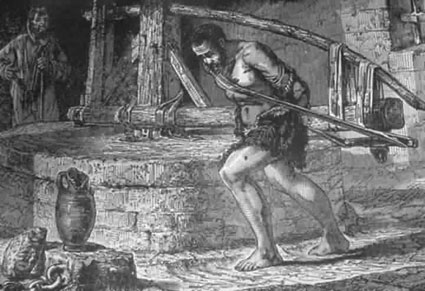
26. Christ returned in A.D. 70 (?), but according to preterists the literal cloud was missing (see Acts 1: 9; Matt. 24: 30; Rev. 1: 7).
The “Bible matrix” pattern always begins with a Word from God’s glory cloud on the Lord’s Day (Sabbath), the accepted Mediator received into this single-cloud “Tabernacle” (Firstfruits) and ends with multiple clouds, a corporate Mediator (the body). The Feast of Tabernacles (“succoth”) is literally the Feast of Clouds. This was fulfilled in AD70. Christ ascended to prepare the place, and the firstfruits church was received into it at the destruction of the Temple.
See also Not Just Any Old Cloud.
Continue reading
Comments Off | tags: Feasts, Glory cloud, Isaac, Jacob, Judaisers, Samson | posted in Biblical Theology, The Last Days
Jan
19
2010
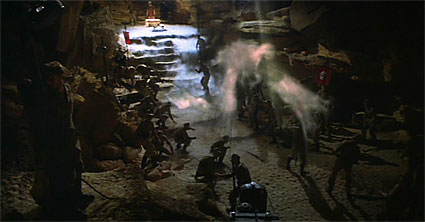
21. The New Covenant is still not established, because Christians need teaching. Jer. 31: 34.
The Jeremiah passage is actually not referring to the first century, but to the Restoration Covenant. Every death-and-resurrection of Israel starts with law on stone and ends with law on flesh, ie. law incarnate. See Jeremiah was a Bullfrog? The writer of Hebrews is simply saying, “It’s happening again one last time!”
Continue reading
Comments Off | posted in Biblical Theology, The Last Days
Jan
17
2010
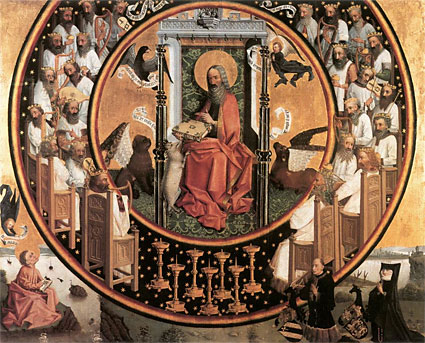
11. “We shall see Him as He is.” (1 John 3: 2). Never happened in A.D. 70.
12. “We shall know, even as we are known” (1 Cor. 13: 12). Still not fulfilled — unless you redefine knowledge.
I believe the first resurrection occurred during the Jewish war. Revelation specifically teaches two resurrections bookending the kingdom age. The end of the Temple was the coming of the kingdom. We cannot spiritualise this idea and say the first resurrection is conversion. That’s not what the text says. It says that those who took part in the first resurrection lived and reigned with Christ for the millennium. They are a human government in heaven. See Big Government.
I am not conceding anything to hyperpreterists. Yes, I believe they are right (to some degree) concerning a resurrection in AD70. What they don’t take into account is the pattern of the bigger picture laid down in the Old Testament, starting in Genesis, a pattern that structures the world, the Tabernacle, and even the human body, that leaves their denial of a future resurrection and judgment without justification. A physical “Land” resurrection actually guarantees a physical “World” resurrection. See Trinitarian Judgments.
Continue reading
Comments Off | tags: AD70, Resurrection | posted in Against Hyperpreterism, Biblical Theology, The Last Days, The Restoration Era, Totus Christus
Jan
16
2010
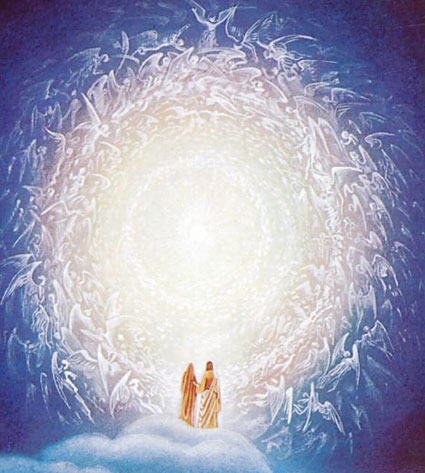
Then He said, “Do not draw near this place. Take your sandals off your feet, for the place where you stand is holy ground.” Exodus 3:5
A sacrifice is literally a nearbringing. James Jordan suggests that instead of sacrifice or offering, a better translation of the word qorban would be “nearbringing”:
“The English “sacrifice” tends to connote the idea of giving something up for someone else. That has little if anything to do with qorban. “Offering” tends to connote a gift, which again has nothing to do with qorban. The word means to draw near, to get into close relationship with someone, and it is used only in relationship to God. We do not worship God by giving Him anything, for He needs nothing. We do not worship God by giving up anything good, for He is the one who has given us all good things. We worship God by drawing near to Him.” [1]
The first nearbringing was the marriage Covenant between Adam and Eve. There was blood when Adam was “divided” so that Eve might be “constructed.” [2] And we can assume that when Adam and Eve were first physically united there was also blood.
Continue reading
Comments Off | tags: Genesis, James Jordan, Peter Leithart | posted in Biblical Theology, Quotes, The Last Days
Jan
15
2010
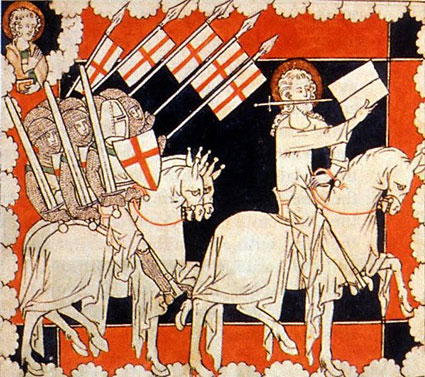
3. 97,000 Jews got away scot free from Revelation 19: 21.
“And the rest were killed with the sword which proceeded from the mouth of Him who sat on the horse. And all the birds were filled with their flesh.”
Continue reading
2 comments | posted in Biblical Theology, The Last Days
Jan
14
2010

Here’s the first of my replies to Brian’s contentions. I’ve put a 50 Failed Predictions? link under featured articles so all posts in this series are easy to find.
1. The bodies and souls of the wicked were not thrown into Gehenna (Matt. 10: 28).
Gehenna was the Valley of Hinnom. It was the site of the child sacrifices before the exile. The Lord atoned for this shedding of innocent blood to false gods by filling it with the bodies of the idolaters—a mass grave. Then the Land was ceremonially clean. Fittingly, Ge-Hinnom was the site of Jeremiah’s terrifying threats in Jeremiah 18, which Paul draws upon in Romans 9:21.
Continue reading
10 comments | tags: Genesis, Herod, Tabernacle, Tophet | posted in Biblical Theology, The Last Days


































